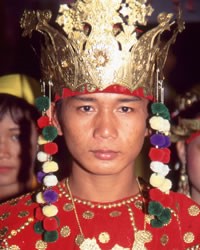Komering in Indonesia

Photo Source:
Copyrighted © 2026
Create International All rights reserved. Used with permission |
Send Joshua Project a map of this people group.
|
| People Name: | Komering |
| Country: | Indonesia |
| 10/40 Window: | Yes |
| Population: | 538,000 |
| World Population: | 538,000 |
| Primary Language: | Komering |
| Primary Religion: | Islam |
| Christian Adherents: | 0.06 % |
| Evangelicals: | 0.03 % |
| Scripture: | Portions |
| Ministry Resources: | No |
| Jesus Film: | Yes |
| Audio Recordings: | Yes |
| People Cluster: | Lampung of Sumatra |
| Affinity Bloc: | Malay Peoples |
| Progress Level: |
|
Introduction / History
The Komering get their name from the Komering River, which is their life source. The Komering River has the potential to become an irrigation source for the year-round planting of rice. Additionally, instruction about the use of 4-month rice would increase agricultural productivity for these precious people. There are two subgroups within the Komering - the Komering Ilir ("downstream") and Komering Ulu ("upstream"). The Komering generally live on both sides of the river, but the side that has a main road normally has more people and is more prosperous.
What Are Their Lives Like?
In general, rice cultivation among the Komering still relies on direct rainwater or irrigation systems supplied by rainwater cisterns. Rice can be grown only if there is enough rain. Water supply through river irrigation is only found in Belitang in East OKU regency, which is predominantly inhabited by Javanese people. The local people have heard about other varieties of rice that mature in only three or four months, but have not tried them yet.
What Are Their Beliefs?
Most Komering are followers of Islam, which strongly influences their culture. They also still believe in spirits. They often call a shaman to heal the sick or to cast out demons. It is forbidden for them to marry people from other non-Muslim ethnic groups.
What Are Their Needs?
Komering people need the opportunity to hear and respond to the gospel. There are quite a few believers among the Komering's near neighbors, the Javanese.
Prayer Points
Pray the Javanese will understand the Great Commission and share the gospel with the Komering.
Pray for the few Komering individuals who identify as Christians.
Pray they will be zealous to serve Jesus Christ and will have their faith strengthened through fellowship with each other.
Pray for the Holy Spirit to speak to the hearts of Komering imams and family leaders.